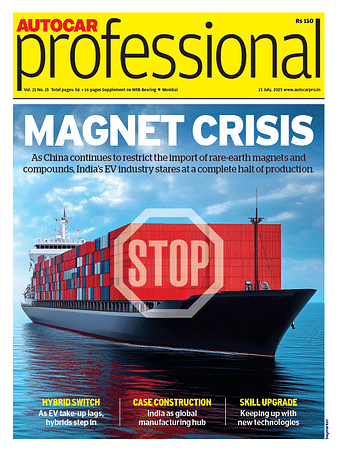Proposed Safeguard Duty on Steel Imports Raises Alarm Bells for Indian Construction Equipment Sector: ICEMA
If implemented, the safeguard duty could further raise prices, potentially forcing manufacturers to pass on the additional costs to consumers, ICEMA noted, voicing concerns on behalf of the construction equipment industry.
The Indian construction equipment (CE) industry has expressed deep concern over the proposed imposition of a 12% safeguard duty on steel imports, cautioning that such a move could severely impact the sector’s operations and hamper infrastructure development across the country. The industry’s concerns were voiced the Indian Construction Equipment Manufacturers Association (ICEMA), in a detailed statement issued today.
The Indian CE industry, currently valued at around USD 9.5 billion, is the third-largest globally—behind only the United States and China. The sector plays a critical role in supporting India’s infrastructure development through the supply of advanced and high-performance machinery used in road construction, railways, urban development, and more, ICEMA said.
Steel is a vital input for the industry, particularly high-strength and high-tensile grades as well as specialized pipes and tubes. Many of these materials are not manufactured domestically and are therefore imported to meet production requirements. ICEMA pointed out that restricting these imports could severely impact construction equipment manufacturing, especially where local production does not meet the necessary technical specifications or volume needs.
The industry notes, as said by ICEMA, that even the ongoing inquiry into the safeguard duty by the Directorate General of Trade Remedies (DGTR) has already caused disruptions in the market. Steel prices have reportedly surged by nearly INR 10,000 per tonne since the beginning of the discussion, adding to the input cost burden for CE manufacturers.
If implemented, the safeguard duty could further raise prices, potentially forcing manufacturers to pass on the additional costs to consumers. This comes on top of the cost pressures resulting from the introduction of the CEV Stage V emission norms, which took effect on January 1, 2025. ICEMA has stated that a cumulative increase in costs could impact manufacturing timelines, equipment deliveries, and ultimately, infrastructure project execution.
The industry also warned of possible long-term consequences for India’s export competitiveness. As global markets adopt "China plus One" strategies to diversify supply chains, Indian manufacturers have a strategic opportunity to expand internationally. However, escalating input costs may erode that competitive edge.
ICEMA urged the government to undertake a thorough and transparent assessment of the safeguard duty’s necessity and implications. The industry emphasizes the importance of a balanced policy approach that supports domestic steel production while ensuring the continued growth and global competitiveness of downstream sectors like construction equipment manufacturing.
The association has called for broader consultations with key stakeholders to ensure that any policy intervention supports sustainable industrial growth and does not hinder India’s infrastructure momentum.
RELATED ARTICLES
SIAM Conclave Explores Sustainable Strategies for Automotive Logistics
Stakeholders discuss multimodal transport, digital innovation, and sustainable practices to improve efficiency and resil...
Varroc Appoints Padmanabh Sinha as Independent Director
Sinha returns to Varroc’s Board with over 25 years of investment experience across private equity and technology.
Railways To Introduce More Specialized Wagons For Vehicle Transportation: Hitendra Malhotra
Hitendra Malhotra, a member of the Railway Board for Operations & Business Development at the Ministry of Railways noted...





 By Arunima Pal
By Arunima Pal
 21 Apr 2025
21 Apr 2025
 3130 Views
3130 Views





 Sarthak Mahajan
Sarthak Mahajan


 Shruti Shiraguppi
Shruti Shiraguppi

 Kiran Murali
Kiran Murali

